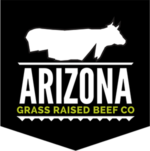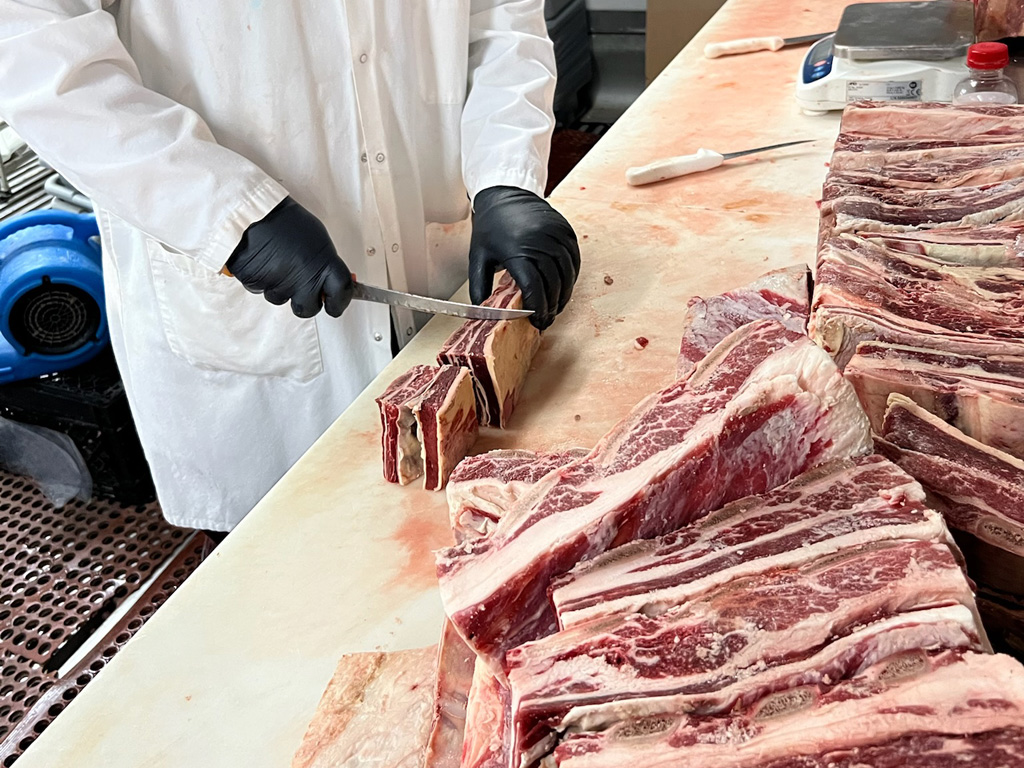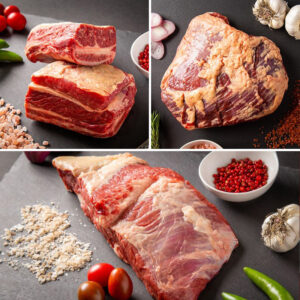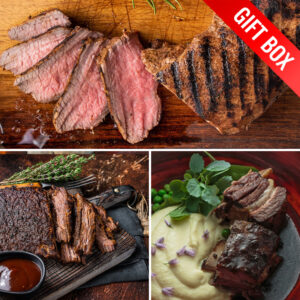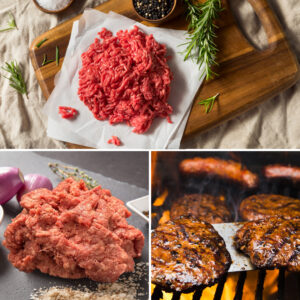Steak can be tricky business. The word itself has become an ambiguous term for a myriad of beef cuts, which are often meant to be treated differently in preparation. We also think it is important to know and respect how many steaks you can expect from one animal. In the modern culinary culture it can start to feel as though steaks grow on trees!
We have created a little cheat sheet for all you meat goers. You are always welcome to ask about how to prepare the steaks (and everything else) we sell, but we hope with this little guide you can gain further steak confidence.
Whether you purchase a whole, half, or quarter portion it is important to know where the meat is located on the animal.
Tenderloin
Comes from the loin section of the animal. It sits tucked up against the vertebrae and is a minimally used muscle, which is why it is tender. You will see this muscle on the famous “Florentine Steak”, Porterhouse, T-bone and on our website boneless. It is the #1 most tender muscle on the animal and meant to be grilled or seared on high heat, and cooked medium rare.
Ribeye
Rests atop the rib plate and behind the shoulder. The steak is made up of two muscles, the longissimus dorsi (New York) and the very much sought after rib cap, aka spinalis. We dry age each Rib Roast and cut steaks after 28-38 days depending on readiness and workflow. When grilling, we leave our ribeye out for an hour, salt and or marinade and then bbq on a hot grill. The same can also be done in a pan or even an air fryer believe it or not.
New York
Is no slouch and it’ll give it’s neighbors a run for their money. Topping out at 3rd most tender cut on the cow, we sear this steak and slice it thin to enjoy it’s full flavor and tenderness. Try using some finishing salt and or adding some chimichurri with this steak to really knock your socks off.
Flat Iron
Rests on the outside of the shoulder blade, protected by a sheeth of sinuu and bit of a fat cap. When seemed out properly, this steak becomes the 2nd most tender on the entire animal and can be prepared over high heat quick and easy. Due to it’s location, the movement contributes blood flow adding a flavor to this steak that lets it go toe to toe with any steak on the beef!
Chuck Roast
Is the upper shoulder muscle group located next to the vertebrae. This part of the animal is arguably the MOST flavorful and must be slow cooked to enjoy. It’s an easy cut to season/marinate however you like, seared and brown on all sides in a pan, then slow cook / braise with liquid covering 2/3’s of the meat. A great base liquid is our grass fed beef bone broth, but don’t be afraid to add a pint of your favorite Salsa to make shredded beef tacos. Or!!!! If you are in the mood for Italian, add some whole/crushed tomatoes and bake at 375-400 for 3 hours, pull and top on some pasta.
Hanger steak
Sits in the center of the diaphragm near the tenderloin, liver and kidneys. It has the most robust flavor of any cut on the beef, and it must be sliced properly as it can be chewy if not cut in the properly, thin and perpendicular to the muscle fibers. This steak has been coveted for years, and is also known as the Butcher’s cut.
Skirt steak
Spans across the inside of the animals rib cage, expanding and contracting as the animal forages the natural landscape. This is the #1 cut for tacos. Marinate 1-24 hours and enjoy on a very hot grill. Try not to cook this one in a pan….it simply won’t do it justice. The Skirt deserves a hot grill and preferably wood some firey wood! But gas works too as that’s what we cook on 95% of the time. Let it rip on high for 2-4 minutes until you’ve got some good grill marks and flip it. After each flip, pour your marinade which will add flavor and caramelize the meat. Same goes on side two, then flip for another 1-2 minutes each side a second time around. Once cooked to your liking, pull and let the meat rest for 10 minutes minimum. Slice thin against the grain and ENJOY!!!
Top Sirloin
Is a large muscle near the hip. It’s position above the rear leg gives it plenty of blood flow, resulting in a wonderful beef flavor that cannot be found on any other part of the animal. This steak is lean and cooks quickly. Sear on high heat on the grill; or in a pan using our grass fed tallow. Cook to medium rare+ and slice thin.
Tri Tip
Is on the front of the hind leg. It can be sliced and cooked as steaks, or it can be cooked whole as we prefer. Cooking the whole muscle results in a variety of doneness, so be mindful not to overcook the corners while waiting for the temp to rise in the center. Tri tip can also be smoked fat side up, and or finished on the grill or hot pan which is hands down our favorite way to cook this beef lovers cut.
Brisket
Low and slow is the name of the game here. You can braise using broth and or other liquid, slow cook, or even put it in your smoker. Your choice, but whatever you do, DON’T RUSH IT! An internal temp of 195-203 is the target. Once at temp, pull and let it rest for 15-20 minutes before slicing. Be sure to have plenty of buns and bbq!
Bone in Short Ribs
Follow the similar cooking techniques to Brisket and Chuck Roast. Braise in the oven or crock pot, or put it on the smoker and what till the meat falls off the bone. Low and Slow is the name of the game. Take your time.
A quick cheat is the brown all sides in a hot pan, then place in the InstaPot for 2:30hrs on high pressure with our grass fed bone broth and your favorite bbq sauce. Keep warm 4-6 hours and enjoy.
https://meat.tamu.edu/ansc-307-honors/meat-tenderness/
The animals we butcher are older than 30 months, so we are unable to sell bone in filet per USDA regulation FSIS DIRECTIVE 6100.4.
https://www.fsis.usda.gov/sites/default/files/import/QA_6100.4.pdf
